3. LubanCat-Zero Series hardware introduction¶
LubanCat-Zero is a low power consumption, high-performance Mini board based on the RockChip RK3566 design launched by Embedfire Technology. It selects the best from the reserved hardware resources, fully considers the needs of users, optimizes the ultimate cost, and retains core functions.
Due to the excellent performance of RK3566, even in some occasions that require high computing performance, it is still competent. This series of boards is mainly aimed at makers and entry-level developers. By reducing the peripherals that are not commonly used, it can easily run Linux or Android systems while pursuing the ultimate cost performance.
LubanCat-Zero, the series of boards provide complete SDK driver development kits, design schematic diagrams and other resources, which are convenient for users to use and secondary development.
3.1. LubanCat-Zero-W¶
3.1.1. Product description¶


LubanCat-Zero-W uses a SOC including quad-core Cortex-A55 processor, Mali G52 2EE graphics processor and energy-efficient NPU, with dual-band WIFI+BT4.2 wireless module, HDMI, USB2.0 Type-C , MIPI screen and camera and other peripherals, reserve 40Pin pins.
Examples of application scenarios of the LubanCat-Zero-W board:
Mobile single-board computer, with office, education, programming development, embedded development and other functions.
Personal git repository, server.
Projects such as robots, drones, wireless devices, etc.
Smart devices such as smart home hubs.
3.1.2. LubanCat-Zero-W Board Hardware Resources¶
The hardware resources of the LubanCat-Zero-W board are shown in the figure:
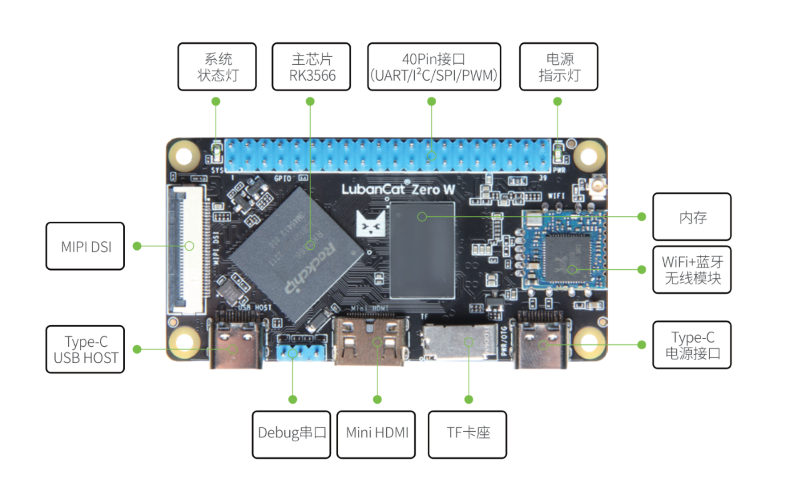
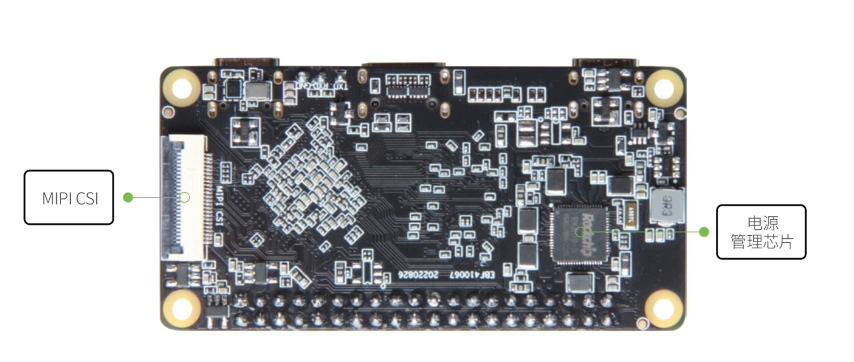
LubanCat-Zero-W board hardware resource list:
Board name |
LubanCat-Zero-W |
Power interface |
Type-C_5V@3A DC input |
Main chip |
RK3566 (quad-core Cortex-A55, 1.8GHz, Mali-G52) |
Memory |
LPDDR4/4x-1/2/4/8GB |
TF card holder |
TF card boot system, up to 512GB |
Wireless network |
802.11ac dual-band wireless network card, up to 433Mbps; Bluetooth supports BT4.2 protocol |
USB2.0 Type-C |
Interface x1 (OTG), shared with the power interface |
USB2.0 Type-C |
Interface x1 (HOST), the port cannot be powered by a power supply |
Debug serial port |
Default parameter 1500000-8-N-1 |
40Pin interface |
Compatible with Raspberry Pi 40Pin interface, supports PWM, GPIO, I2C, SPI, UART functions |
Mini-HDMI2.0 |
Display interface |
MIPI-DSI |
MIPI screen interface |
MIPI-CSI |
Camera interface |
3.2. LubanCat-Zero-N¶
3.2.1. Product description¶
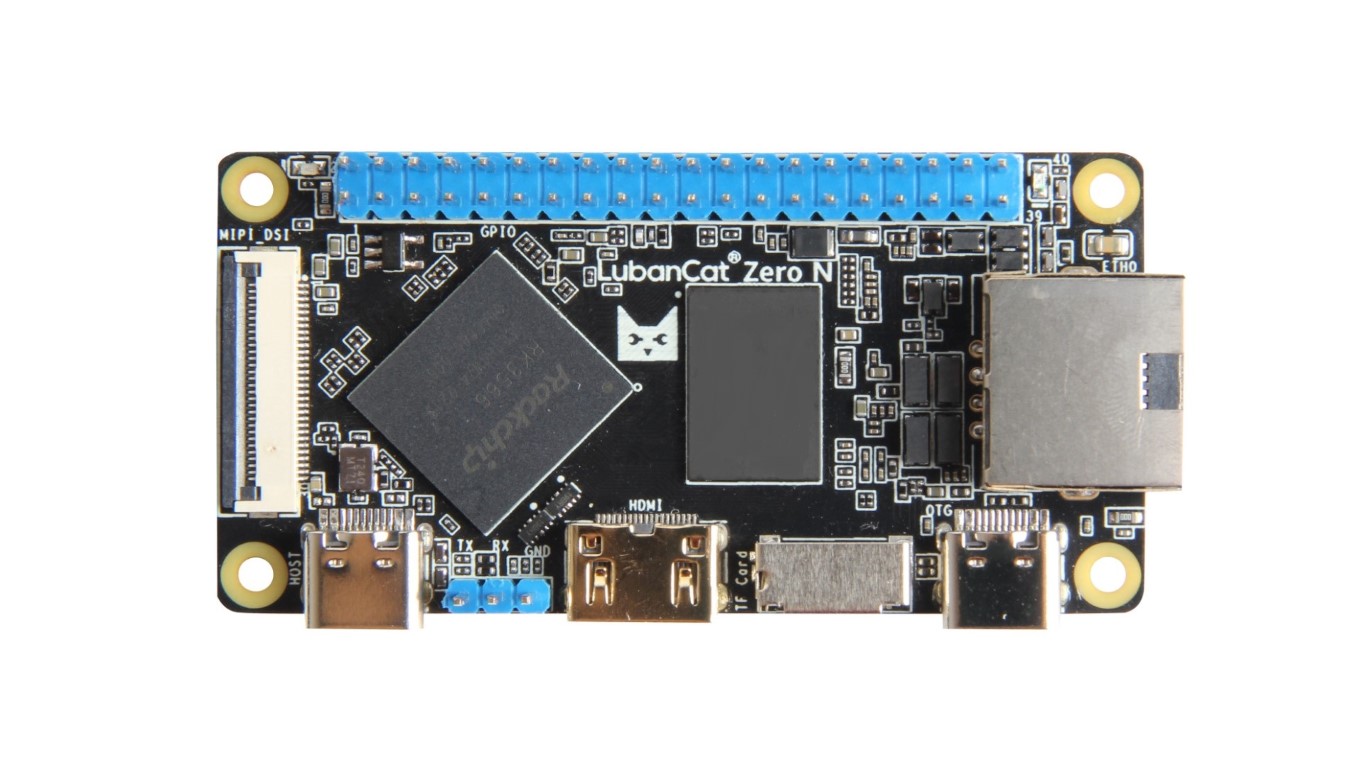
LubanCat-Zero-N uses a SOC including quad-core Cortex-A55 processor, Mali G52 2EE graphics processor and energy-efficient NPU, with Gigabit Ethernet, HDMI, USB2.0 Type-C, MIPI screen, camera and other peripherals, reserve 40Pin pins.
Examples of application scenarios of LubanCat-Zero-N boards:
Single board computer, with office, education, programming development, embedded development and other functions.
Personal git repository, server.
Projects such as robots and drones.
Smart home hub, home security monitoring and other smart devices.
3.2.2. LubanCat-Zero-N Board Hardware Resources¶
The hardware resources of the LubanCat-Zero-N board are shown in the figure:
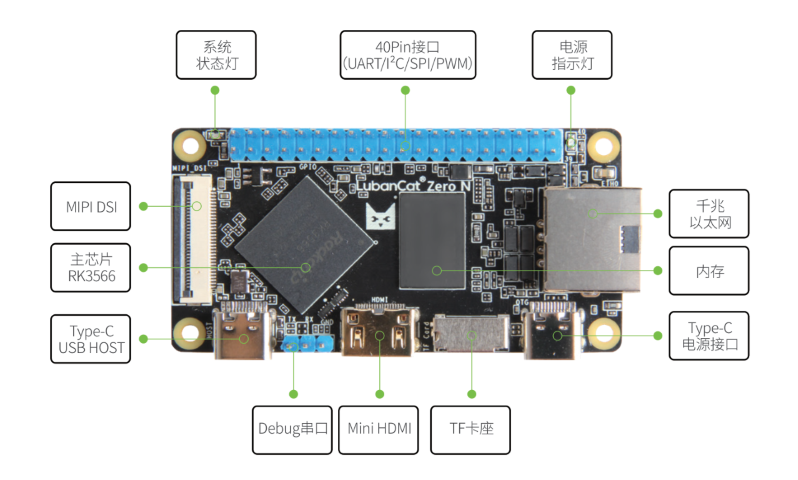
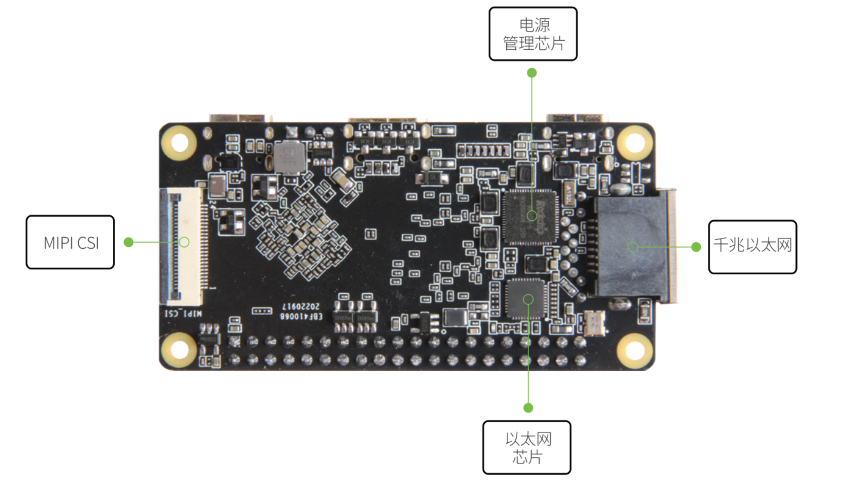
LubanCat-Zero-N board hardware resource list:
Board name |
LubanCat-Zero-W |
Power interface |
Type-C_5V@3A DC input |
Main chip |
RK3566 (quad-core Cortex-A55, 1.8GHz, Mali-G52) |
Memory |
LPDDR4/4x-1/2/4/8GB |
TF card holder |
TF card boot system, up to 512GB |
Ethernet |
10/100/1000M adaptive Ethernet port x1 |
USB2.0 |
Type-C interface x1 (OTG), shared with the power interface |
USB2.0 |
Type-C interface x1 (HOST), the port cannot be powered by a power supply |
Debug serial port |
Default parameter 1500000-8-N-1 |
40Pin interface |
Compatible with Raspberry Pi 40Pin interface, supports PWM, GPIO, I2C, SPI, UART functions |
Mini-HDMI2.0 |
Display interface |
MIPI-DSI |
MIPI screen interface |
MIPI-CSI |
Camera interface |
